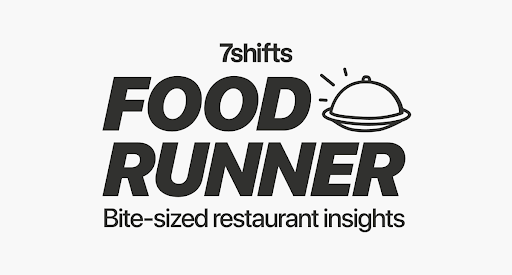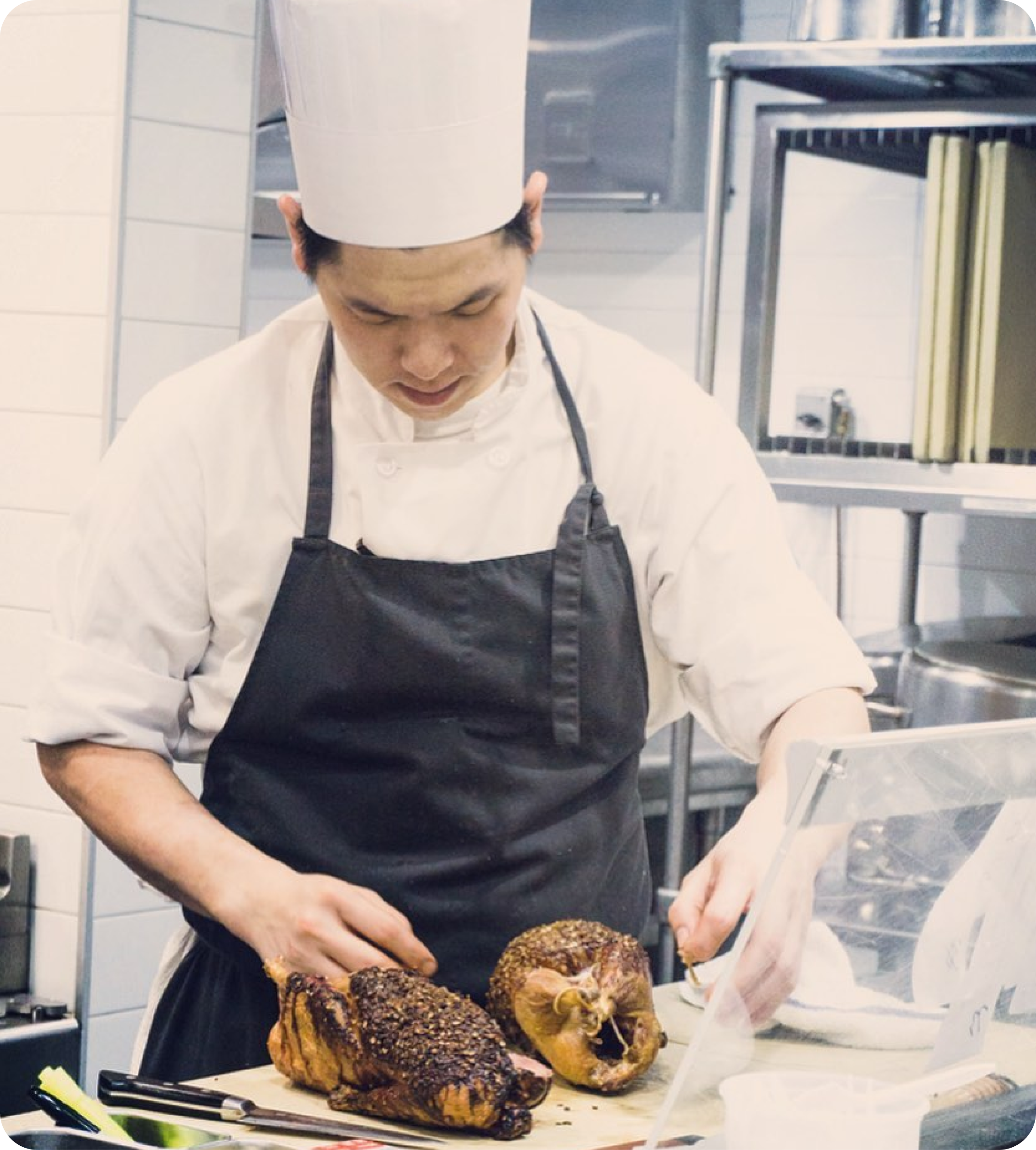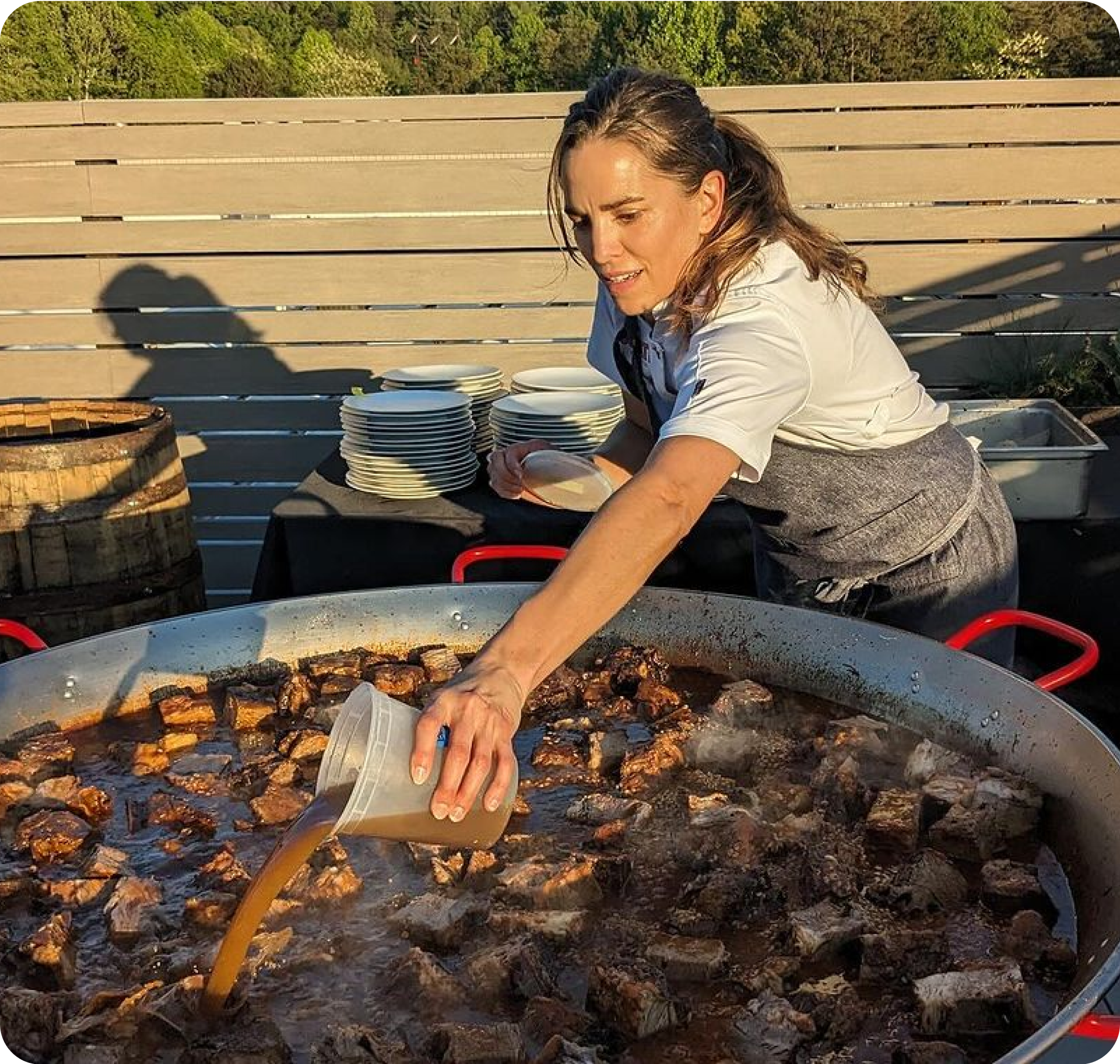|
|
|
Last month we talked tipping. In this edition, we’re extending the discussion to include wages—more fair ones that is. 750,000 US restaurants pay a sub-minimum wage to their staff. So we’re exploring different ways restaurants are structuring team wages as a tool for employee retention and satisfaction.
|
|
|
|
 |
Equal is equal is equal |
 |
Serrrrvice! (fee that is) |
 |
Secret-free and transparent |
|
|
|
|
Read on for some helpful guidance from four restaurant operators… but the non yell-y kind.
|
|
|
 |
STORIES FROM THE FLOOR
|
|
|
|
When Eric Huang opened his own fried chicken shop, Pecking House, he wanted to do things differently than the fine dining restaurants he had previously worked at. He wanted to make things fair, so he started by blurring the lines between the FOH and BOH with higher wages and optional tips (split equally).
“So [I made] a counter-service restaurant. You go up to a counter, there’s someone working in a terminal there, they’ll take your order, you tap to pay, use your credit card, and then you grab a seat. There’s no reservations. Whoever orders first sits first, we’ll bring you drinks, we’ll bring you food, we’ll answer your questions, we’ll help clear your table. But that’s really it. No one’s coming to your table to take your order, to talk to you. We’d obviously talk to our guests and we like that, but there’s no heavily invested server-table relationship that’s in a traditional restaurant. And then for the most part, the kitchen runs your food, they help clear your table and set up the dining room.”
Blurring the lines also means sharing (optional) tips, equally. On top of a higher base wage.
“[Tipping] is an endless debate that causes a lot of big emotions. Obviously I wanted to treat people better, pay people better, and just do the right thing and make sure people could survive because as we all know, New York and pretty much everywhere is becoming more and more unliveable by the day. So paying someone minimum wage is just really not realistic. And there’s a practical side to it too, we want people to stick around.
We advertise broadly that we’re an equitable tipping restaurant. There’s a sign right there in front of the register, all your tips are split amongst the entire team, we appreciate any gratuity you want to add. But there’s absolutely no pressure. And with all our employees, we make it very clear before they sign on, ‘Hey, this is how it works,’ and it’s either for you or it’s not, but this is how it works.”
And according to Huang, even with some challenges, there’s no going back.
“There is this kind of weird, I wouldn’t say weird, but at least for the first time in my career, where there’s maybe the contentious aspects of socialism/communism where everybody is sharing equally in the means of production and the rewards of production. And so if there are people who are not carrying their weight, there is definitely some different kinds of frustration with that. So maybe it changes the way we manage things and how we lay out expectations for people. But that’s still a part of the learning process. But overall, I would say it’s a lot better and I’ve really enjoyed it and it seems people are happy, or as happy as people can be working your [butt] off in New York. So I couldn’t really picture going back to doing it a different way. Or the old way.”
Read more about Eric’s approach here.
|
|
|
 |
STORIES FROM THE FLOOR
|
|
|
|
Stella Dennig, co-owner and GM of Daytrip restaurant, shares insights on building a restaurant prioritizing pay equity via a service charge split by hours worked.
“With regard to pay equity, we have a base rate for everyone, regardless of the position that you’re starting in. So if you’re a prep cook, if you’re a line cook, if you’re a server, host, runner, dishwasher, the entry level pay is the same range. If you end up taking on more responsibility, and are in a shift lead role, then that’s at a second tier of pay, but it’s not any different between different positions and different teams in the house.
Our entry level is a range. So we start people the first 90 days. We start people at $16 and and then we have a reevaluation period after 90 days where we get them up to somewhere in the $16 to $18 range. And that’s because we want to give people an amount of time to learn maybe 80% of the job and get competitive within the greater whole.”
With equity in mind, that thinking naturally led to a service charge model.
“As we were thinking about it, we felt like we wanted to recognize differences in experience and in levels of responsibility via the base rate. But once we’re in service, we’re all in service together. So that service charge is representative of how service is going and what we’re all contributing to the whole.
We have a 20% service charge that gets divided up proportional to hours worked over a two week pay period. And there’s no point system there. It’s just based on however many hours you worked. And it’s shared across the whole non-managing, non-owner team.”
Another prioritization for Dennig is pay transparency.
“We’ve got transparent pay across the entire team. So everyone can see what everyone else is making, including what my partner and I are making. I think it’s really important to bring people in at the rate that feels fair relative to the skill skill set of others.”
Listen to more of Stella’s approach here.
|
|
|
 |
STORIES FROM THE FLOOR
|
|
|
|
Another service fee story is courtesy of Kelly Phillips at Destination Unknown. But she sees the service fee (no tips) as a means to support salaries and professional wages.
“When we present the bill at the end, there is a service charge included and we are very transparent when we drop the check. ‘We do a service charge in lieu of tipping. Everything is included. There’s no signature needed. Thank you so much for joining us.’ It’s just a little note that we make sure to mention to everybody because there’s a lot of confusion now. Some people are doing the service charge with a tip line, but we just removed it from the equation. If somebody wants to leave a little extra in cash, that’s totally up to them. But our servers will say, ‘Oh, no. I’m on salary. Please just come back and see me again.’ Or, ‘Please leave me a review on Google. That would be very meaningful to me,’ because there is a bonus incentive for them. If we uphold our scores on Google and Yelp, they’ll all get a bonus at the end of the month.”
The service charge helps even the playing field for team members.
“Trying to figure out how to pay people fairly and incentivize them to come to work, and just to make it more sustainable, we shifted to what we call a professional wage. And we call it that because there’s this term living wage, but we want to treat this as a career. It’s my career, many of our employees’… it’s something they want to do for the rest of their lives. They’re committed, they love it, they’ve been doing it for a long time. We wanted to bring dignity to this job. I know we’ve heard about all the ways that restaurant workers can be mistreated and taken advantage of. And for us, we wanted to show there’s a different way to do it.
We have [our] core team on salary and we certainly try to run very lean in the winter. But it works for us. And I’d say, if you are going to implement this, you really need to look at how this works for your team. And I’m not saying you can put everybody on salary overnight, that’s really difficult to do. It’s something we would love to be able to do, but we have a small core team that are on salary, and everybody else is paid that professional wage.”
Read more about Kelly’s approach here.
|
|
|
 |
TOGETHER WITH
|
|
|
|
What’s on the mind of every restaurant owner these days? One word—expansion.
Broad Street Oyster Co. scaled from 1 to 6 locations using 7shifts and Square to analyze sales and labor data. But with any new venture, there were many hurdles and lessons learned along the way.
Register to attend this on-demand Square webinar where Broad Street Oyster Co. founder Christopher Tompkins discusses how to approach expansion, common pitfalls owners should avoid, tips for success, and the crucial role restaurant technology plays.
Get access for free here.
|
|
|
 |
STORIES FROM THE FLOOR
|
|
|
|
When Katie Button’s award-winning restaurant, Curate, closed due to pandemic shutdowns, she took the opportunity to make sweeping changes to how her staff got paid.
They went from paying a sub-minimum wage to a living wage, plus weighted tip sharing. They started with an even tip split across the board before moving into a weighted tip pool structure, all the while creating transparency around base pay rates and opportunities to improve.
“Basically, what it means is we apply certain weights to positions. The end goal is to create a path for people through promotion to move up and receive more pay through the positions. We can’t totally break the [tip share] system, you know what I mean? It’s also been there for so long… and so it was hard, we needed to think about how do we do this in a way that makes sense for us. And so the weighted tip pool works well. We’re able to share tips across the team. But we give a little bit higher tip percentage to those workers who do have the opportunity to sell, to our FOH servers and bartenders, [et cetera].
And now we’ve coupled that with clear base pay rates and abilities to achieve raises for all positions that are based on education and training. So, in the kitchen, as you learn new stations, that’s how you get potential bumps. And in the FOH, as you learn and pass a wine test, you get bumps. We’re creating equality in those areas. And in the prep kitchen, if you move from peeling and cutting potatoes into recipe production where you’re reading a recipe and creating a sauce or something like that, there are moments to move those base pay wages.
We’re also seeing [a] really nice thing in the slow season. When you go to a tip sharing model, there aren’t quite those big, drastic peaks and the big, drastic drops, because the base wage is so much higher for everybody that it normalizes things for people. And honestly, they can therefore plan. And it’s true that in the winter our labor percentage goes up because of that situation, but then it evens out when you look at the full year.”
A big part of the stride to transparency is making the team part of the evolution of the restaurant. Another way they reinforce this is by posting the tip pool breakdown for everyone to see.
“It’s this idea that they know that they can look through and see all the names and then they also see [the tips] totalled out. And they can see consistency in that too, in the ebbs and flows of the season. So, it becomes predictable, but also it feels clearer and more understood.”
Button says these new practices have had a positive effect on team morale in the FOH and BOH.
“The people in the restaurant feel more connected to each other, and also they feel less at the mercy of the potential guest situation that they have going on. The balance of your entire paycheck being left in the hands of how someone is feeling that day does not work. I mean, it creates opportunities of harassment and racial and sexual assumptions and judgments of individuals, and therefore it’s just not right.”
Read more about Katie’s approach here.
|
|
|
 |
À LA CARTE
|
|
|
|
|
|
Q: What would you like to read about next?
|
|
We’re planning upcoming issues of Food Runner and need your input! What industry topics are you and your team interested in? Think: areas your business is struggling with, topics you find fascinating, or anything else that comes to mind. Any and all suggestions are welcomed!
|
|
|
|
|










